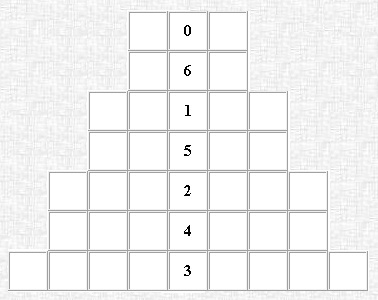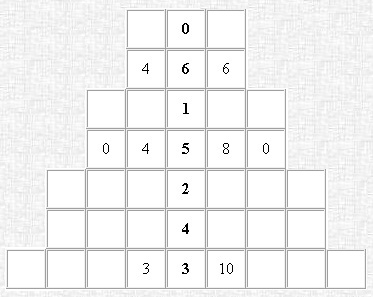Pyramid
Number of decks: 1
Number of cards in the deck: 24
Number of players: 2 - 4
The seniority of the cards: 9, 10, B, D, K, T.
Purpose of the game: score the highest score.
Rules of the game.
The game was invented on January 19, 1979 in Vilnius (Lithuania), where it spread.
The sender is determined by request or by lot.
The deck is carefully shuffled, removed and each player is dealt 6 cards, if the players are less than four, then the remaining cards after the hand are put aside and participation in the game is not accepted.
After that, the player to the left of the handler announces how many bribes he will take and trump suit in the game.
Next, he makes the first move in the game with any of his cards, every next player can put any of his cards in response.
Before putting a card, rivals can communicate with each other and discuss plans in the game in order to prevent the player who ordered the game from taking the number of bribes that he must take.
The laid out cards from each player form a bribe, which is taken by the player who puts the highest card, or the trump or senior trump card.
After all the bribes will be played, scoring begins.
If the player takes the claimed number of bribes: he gets 10 points;
If more or less by 1 bribe, then gets 8 points;
If more or less by 2 bribes, then gets 6 points;
If more or less by 3 bribes, then receives 4 points;
If more or less by 4 bribes, then receives 2 points;
If more or less by 5 bribes, then receives 0 points;
If more or less by 6 bribes, then it gets -2 points.
Thus, only one game is played, although in reality there should be 32 games played together, 48 games of threesome or 64 games of the four of them.
Why?
Each player must make 16 announcements about taking a certain number of bribes:
![]() 0 and 6 bribes - must be announced 1 time;
0 and 6 bribes - must be announced 1 time;
![]() 1 and 5 bribes - must be announced 2 times;
1 and 5 bribes - must be announced 2 times;
![]() 2 and 4 bribes - must be announced 3 times;
2 and 4 bribes - must be announced 3 times;
![]() 3 bribes - must be announced 4 times.
3 bribes - must be announced 4 times.
In order to be more convenient to play and not miscalculate, each player draws a pyramid for himself, which indicates the number of ads for this player's bribes.

The central column displays the number of declared bribes.
The left side of the table is used to record the number of bribes that the player took.
The right part of the table serves to record the number of points for the bribes taken.
An example, see the figure below.

This player has made announcements about taking bribes 4 times.
He announced 6 bribes, and took as a result 4 bribes and received 6 points.
Then he announces 5 bribes 2 times and in the first case takes 4 bribes and gets 8 points, and in the second he takes 0 bribes and gets 0 points.
After that he announces 3 bribes and takes 3, and gets 10 points.
In the next games he will have to declare 0 bribes, one, two, three or four bribes.
5 and 6 bribes, he can not announce, because he used these opportunities.
Thus, the game goes on until each of the players completes their pyramid, after which each player sums up the earned points in the pyramid and the victory is awarded to the player who will score the most points.


Comments
When commenting on, remember that the content and tone of your message can hurt the feelings of real people, show respect and tolerance to your interlocutors even if you do not share their opinion, your behavior in the conditions of freedom of expression and anonymity provided by the Internet, changes Not only virtual, but also the real world. All comments are hidden from the index, spam is controlled.